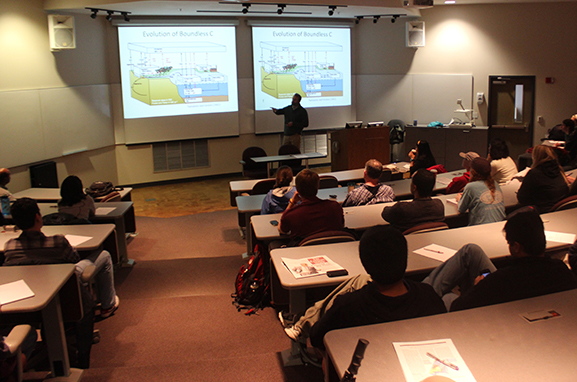In a large course with limited TA assistance, it may seem impossible to offer students meaningful feedback on their progress. In this post, faculty members describe how they use office hours, technology, and TAs to provide appropriate feedback in their large courses.
Office Hours
Kim Caldwell: Some students come to my office truly wanting to learn how to learn, and we have great conversations about their current learning styles and look at what types of questions they are missing (basic knowledge vs. application).  We also talk about study habits and find ways to build small pockets of study time into their daily routine. These students inevitably enhance their performance in class.
We also talk about study habits and find ways to build small pockets of study time into their daily routine. These students inevitably enhance their performance in class.
For the rest, I remind them throughout the semester that I have a folder of study technique tips on Blackboard. This is helpful for some of them that do not want to meet with me.
Brendan Ames: I strongly encourage my students to attend office hours as frequently as possible, as this gives me a chance to diagnose and address any issues in person, as well as an opportunity to provide more detailed and personalized feedback than I can give on an assignment or test.
Timely Feedback
Kevin Shaughnessy: The important thing is to provide timely feedback to students. In some ways, this can be done with technology. I use clickers in class, which allows me to respond to misconceptions immediately, and we use an online homework system that provides students with instant feedback on their understanding. I also do this through Socratic lecturing, where I use student responses to highlight understanding and correct misconceptions.
Finally, it is important that graded assignments be returned to students quickly. I use hand-graded exams in my class. I fortunately have TAs to help grade exams, and I always return them during the next class meeting if possible. This way, students know where they stand, and more importantly, they get feedback while the material is still fresh in their minds.
Positive Reinforcement
Matthew Dolliver: Feedback works best when the student can see it guiding them to a better product or deeper understanding. For example, I have found that phrasing a comment as a guiding question is more helpful than simply marking the statement as “incorrect.” Similarly, giving students positive feedback — instead of skipping over correct answers — often makes them more open to more challenging critical feedback.
Teaching Assistants
Holly Grout: I tell the class which parts of the exam students scored highest on and where, as a group, they struggled. I then ask the GTAs to identify 3-4 major issues and provide tips on how to improve in these areas before the next exam.